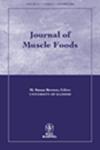In the present work, the proximate compositions, minerals and trace element contents of zander (Sander lucioperca) caught from two lakes (Beyşehir Lake and Seyhan Dam Lake) of Turkey were compared. There were significant differences between moisture and lipid contents, although there were no statistically significant differences between crude protein and ash contents. The mineral and trace elements determined were Na, K, Ca, P, Mg, Zn, Cu, Fe, Pb and Se. Although Na and Fe contents of zanders in two different lakes were different from each other (P < 0.01), we found no statistically significant differences in terms of Mg, Ca, P, Cu, Pb, Se, Zn contents (P > 0.01). Among the minerals analyzed, K was the highest followed by P, Ca, Na and Mg. The most abundant trace elements were Zn, Fe, Cu, Se followed by Pb, and these elements were below the limits proposed by Turkish Food Codes for human consumption in the meat of zander.
This present study includes information about the nutritional value of zander, which lives in the fresh water lakes of our country and of which people are fond and is being exported. The comparison of the proximate, mineral and trace element contents of the same species which are caught in two different lakes has been made. In the scope of human nutrition, in accordance with the minerals which have got much importance, it involves useful information about what the position of this fish is, and whether it contains any risk due to trace elements. Furthermore, concerning this subject, it will also light the way for studies to be made in the future.


